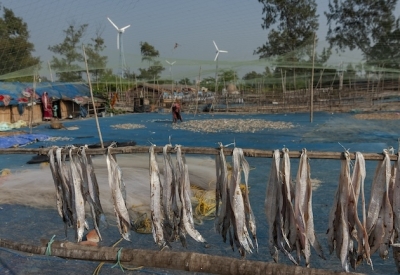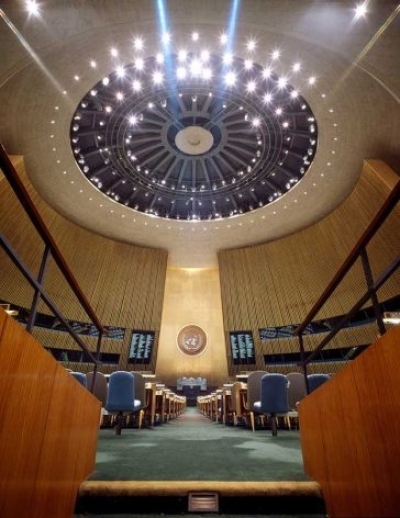KIGALI, Dec 01 (IPS) — With the ongoing national tree-planting campaign, Rwanda seeks to replace its degraded forest resulting from charcoal production and firewood and increase the need for construction materials with new indigenous trees to combat climate change.
By using the power of carbon markets to fight climate change, Rwanda aims to reduce 4.6 million metric tons of carbon emissions across different key sectors, including forest, through its ambitious climate action agenda that features a 38 percent reduction of greenhouse gas emissions compared to business-as-usual by 2030.
Rwanda’s ambitious carbon market strategy has been designed to enhance forest protection and significantly boost the country’s capacity to absorb carbon emissions, but some scientists believe that while planting trees is important, what is very critical is what species of tree to plant and where to plant it.
“People need to underpin the tree planting with knowledge of what ecosystems were before this massive land cover change," said Professor Beth Kaplin, the Director of the Center of Excellence in Biodiversity and Natural Resources Management of the University of Rwanda, while referring to the current situation in Rwanda.
Experts emphasize the need for a shift so that the country ends the homogenization of the landscape, where all riparian zones should not be all one tree species, like it is the case today across different remote rural parts of Rwanda.
“We need to have these native trees scattered around the Rwandan landscape to maximize nature’s contributions to people,” Kaplin told IPS in an exclusive interview.
The Center of Excellence in Biodiversity and Natural Resources Management at the University of Rwanda has identified 29 indigenous species that can help guide tree planting in the appropriate locations to restore ecosystems and the advantages and services we receive from them in Rwanda.
But the critical step, according to researchers, is for local community members to gain knowledge of these native trees, how they grow, and their multiple values.
Soil erosion control in particular suffers the most with plantation-style forest restoration, while native tree species can sequester carbon and attract birds, insects, and pollinators that can serve the surrounding agricultural landscape, according to the researchers.
One of the latest studies conducted by a team of researchers from different Rwandan and Swedish universities has demonstrated that shifts in seasonal variations in rainfall and temperature recorded across the East African region, with high mountains and Great Lakes, are likely to affect tree species composition and the carbon balance of tropical forests.
Dr. Aloysie Manishimwe, one of the co-authors of the study from the Department of Biology, College of Science and Technology, University Rwanda, told IPS that in most cases, tree plantations have an advantage only in wood production, but they are not as helpful as restoring natural forests when it comes to the conservation of biodiversity.
"When restoration goals are about environmental benefits, we should aim to restore native forests," she said.
While findings show that montane rainforests are very productive and contain more biomass and carbon than their indigenous counterparts, they are mostly grown in a warmer climate.
Currently, Rwandan officials urge farmers to change their misguided mindset if they are to take an interest in planting indigenous trees.
According to Concorde Nsengumuremyi, the Director General of the Rwanda Forestry Authority, the majority of farmers still prefer non-indigenous species such as Eucalyptus, which make quick profits in the short term, instead of adopting recommended indigenous species.
Rwanda has exceeded its 30 percent forest cover target by 2020, and the country has achieved 30.4 percent, according to figures from the government.
Although some officials seem to lack information and are missing the big picture of the environmental, health, and economic benefits of indigenous trees in Rwanda, some experts point out that there is still a vast underrecognized opportunity, such as planting these species on road edges and urban areas, where they can greatly contribute to green urbanization.
“Urban parks, road edges, and landscaping around buildings—these can all use native species and replace the non-native species,” said Kaplin, who backs the initiative.
Native tree planting is usually among the most warmly welcomed green options that can help accelerate climate action—voluntary and compliance carbon markets in Rwanda in line with Article 6 of the Paris Agreement signed in 2015.
Currently, researchers are looking to engage with local administrative officials to establish a list of indigenous trees in line with the Spatial Biodiversity Assessment as a tool to guide restoration practices, including native tree planting.
“Our youth are growing up without knowing what the native trees look like in Rwanda; we need to have these native trees scattered around the Rwandan landscape to maximize nature’s contributions to people,” Kaplin said.
The Rwanda Forest Authority predicts that the country will plant 4.9 million fruit trees, 6.7 million ornamental trees, 273,590 bamboo trees, 34.2 million agro-forestry trees, and 16.5 million trees in general for different purposes.
Rwanda is not the only country that is planting trees. Earlier in November, the Kenyan government declared a public holiday to encourage the planting of trees, aiming for 15 billion trees by 2032.
IPS UN Bureau Report






